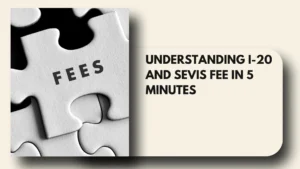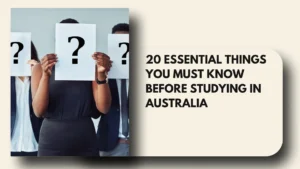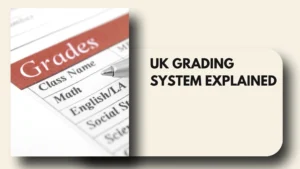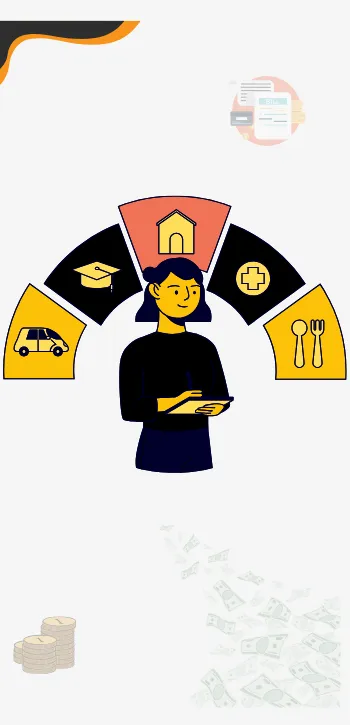- UCAS personal statement replaces the traditional essay format with three structured questions for UK university applications.
- UCAS answers on course motivation must cite specific defining moments, and super-curricular activities like research, not generic passion statements.
- The new UCAS format keeps a 4,000-character limit with at least 350 characters per question, allowing applicants to highlight their strongest achievements.

UCAS, or the Universities and Colleges Admissions Service, is the UK’s central platform for university applications and an essential gateway for international students. The UCAS Personal Statement has seen its biggest update in decades. From the 2026 entry cycle, applicants will no longer write an open-ended essay but will answer three structured questions that help them explain their goals and achievements clearly. This represents a major shift in how universities in the UK assess applications.
In this blog, we’ll explain how to approach the new UCAS Personal Statement format, and how to make your responses stand out among top universities in the UK.
How to Answer the New UCAS Personal Statement Questions?
The three questions help structure your answers so that universities can see exactly what they need to make admissions decisions. Think of them as conversation starters rather than exam questions. Each one serves a specific purpose in building your application story.
Question 1: Why Do You Want to Study This Course or Subject?
Students could identify a key role model or moment that ignited their interest, and discuss how they furthered this through super-curricular engagement like reading, watching, visiting, or listening to content of their own accord. Universities want to see authentic interest, not generic statements about lifelong passions.
Write about the specific moment or experience that sparked your interest. Connect your interest to future career or academic aims if you know them at this stage.
Sample Answer for Masters in Engineering (1200 characters):
My fascination with sustainable infrastructure engineering deepened during my final year undergraduate project at Delhi Technological University, where I designed a rainwater harvesting system for urban high-rises. The challenge of integrating traditional engineering principles with environmental sustainability revealed gaps in my knowledge, particularly regarding advanced materials and climate-resilient design methodologies that are extensively researched in UK universities.
Reading research papers from the Institution of Civil Engineers, particularly Dr Sarah Thompson’s work on carbon-negative concrete at Imperial College, illuminated innovative approaches that are not widely taught in Indian curricula.
The UK’s leadership in sustainable engineering research, combined with its commitment to achieving net-zero emissions by 2050, makes it the ideal location for advanced study. I am specifically drawn to programmes offering specialisations in green building technologies and smart city infrastructure. My long-term aspiration is to return to India and contribute to developing climate-resilient urban infrastructure that addresses the unique challenges of rapidly growing Indian cities.
Question 2: How Have Your Qualifications and Studies Helped You to Prepare for This Course or Subject?
This section focuses on formal education, including current or previous studies within school, college, training providers, or short online courses. The key is relevance. Focus on what’s most recent and directly applicable to your chosen course.
Sample Answer for Masters in Engineering (1322 characters):
My Bachelor of Technology in Civil Engineering from Delhi Technological University provided comprehensive foundations in structural analysis, geotechnical engineering, and construction management. Core modules in advanced mathematics, including partial differential equations and numerical methods, equipped me with the analytical tools necessary for computational engineering research at the postgraduate level.
During my undergraduate thesis on seismic retrofitting of existing structures, I gained extensive experience with finite element analysis software including ANSYS and SAP2000. This project, which received the Best Thesis Award from my department, involved conducting parametric studies on different strengthening techniques, analysing over 200 structural configurations.
I supplemented my formal education by completing a professional certification in Building Information Modelling (BIM) from Autodesk, which taught me collaborative design approaches used internationally. Additionally, I completed an online course on Sustainable Construction Materials from MIT OpenCourseWare, exploring innovations like geopolymer concrete and recycled aggregates. These experiences have cultivated the research mindset, technical proficiency, and interdisciplinary thinking essential for Masters-level engineering study.
Question 3: What Else Have You Done to Prepare Outside of Education, and Why Are These Experiences Useful?
While answering this, your work experience and volunteering should be weighted according to course relevance, drawing out skills, knowledge and experience that relate to your course. The same applies to personal experiences, responsibilities, hobbies, and extracurricular activities.
The content ratio should still be 80:20 academic to co-curricular, and closer to 90:10 for very elite and competitive courses.
Sample Answer for Masters in Engineering (1300 characters):
Following my undergraduate degree, I worked for eighteen months as a Junior Structural Engineer at Larsen & Toubro, one of India’s largest infrastructure companies. Contributing to the design and execution of a metro rail project in Mumbai exposed me to real-world complexities that classroom learning cannot replicate. I was responsible for conducting structural health monitoring of existing elevated sections, coordinating with multidisciplinary teams including architects, environmental consultants, and government authorities. This experience taught me to balance engineering ideals with practical constraints including budget limitations, regulatory compliance, and stakeholder management.
I volunteered with Habitat for Humanity India, where I helped design low-cost housing solutions for underprivileged communities. This experience highlighted the social responsibility inherent in engineering and reinforced my commitment to developing affordable, sustainable infrastructure solutions.
Pursuing a Masters in the UK will provide access to cutting-edge research facilities, exposure to diverse international perspectives on engineering challenges. The UK’s emphasis on research-led teaching and industry collaboration aligns perfectly with my goal of becoming a researcher-practitioner in India.
Best Writing Tips for the New UCAS Personal Statement Format
Make sure your responses connect smoothly, completing your personal arc from the initial spark of interest through your academic and experiential journey to your foresight about future roles and contributions in India. Avoid repeating information across sections; instead, use each part to advance your story with purpose.
- Start early. Give yourself time to plan, draft, and refine. Use the PEEL method (Point, Evidence, Explain, Link) to present clear, thoughtful examples that show genuine engagement.
- Be authentic. Include experiences that build key skills through activities, part-time work, or hobbies, and avoid generic claims that sound rehearsed.
- Do your research. Compare course modules across universities and use shared themes to highlight your super-curricular interests effectively.
Common Mistakes to Avoid
Writing a strong personal statement requires clarity, focus, and reflection. Avoid these mistakes while drafting your answers:
- Opening with vague statements like “I have always been passionate about” signals generic content. Avoid unlikely statements and instead identify a specific role model or moment that ignited their interest.
- Don’t waste characters on information already elsewhere in your application. Your grades are listed separately. Every word counts when you have 4,000 characters total.
- Listing activities without explanation wastes valuable space. Instead of “I play violin, captain the football team,” explain what one of these taught you and how it relates to your course.
Key Takeaways
The new UCAS personal statement format brings much-needed structure to the application process, making it easier for international students to showcase their academic journey and aspirations. The three questions are designed to draw out your authentic story: what drives your passion, how your education has prepared you, and what real-world experiences make you stand out.
Remember to start early, be specific with examples, and ensure each section builds on the previous one to create a cohesive narrative.
Ready to take the next step? AdmitX guides Indian students through every stage of their UK application journey, from crafting compelling personal statements to securing your student visa.
- University Selection Guidance
- SOP Review
- Study-Abroad Document Templates
- Free IELTS Bootcamp Course
- Scholarship Assistance
- Visa Support Services
And much more!
Book your FREE study abroad counselling session today!
FAQs
What is the total character limit for the new UCAS personal statement 2026 format?
The total character limit remains 4,000 characters including spaces, with each of the three questions requiring a minimum of 350 characters.
Can I distribute the 4,000 characters unevenly across the three UCAS Application?
Yes, you can use the 4,000 character count limit across all answers in any way you choose, as long as each question has at least 350 characters.
Should I mention my grades in my UCAS personal statement?
No, universities and colleges will see your grades elsewhere on your application, so don’t waste time talking about these.
Can I use ChatGPT or AI tools to write my UCAS personal statement?
Generating and then copying, pasting all part of your personal statement from an AI tool, could be considered cheating by universities and colleges.
Do conservatoire applications use the same three-question format for 2026 entry?
Yes, conservatoire personal statements will also follow the new format for 2026 entry applications.
Will universities review my personal statement as separate sections or as a whole?
Admissions staff will still review your personal statement as a whole, so remember not to repeat information.
What should I avoid writing in the opening of my UCAS personal statement?
You should avoid vague, unlikely statements such as “I have always been passionate about…” and instead identify a specific moment that ignited your interest.
Can I apply to both Oxford and Cambridge in the same year?
No, you cannot apply to both universities within the same admissions cycle.
How many university choices can I make in my UCAS application?
You can have a maximum of five university choices in total in your UCAS application.
What is the cost of living in the UK for Indian students?
In London, students typically spend £1,310–£2,230 (₹1.5–2.6 lakh) per month. In other UK cities, the cost is lower, around £760–£1,550 (₹90,000–1.8 lakh) per month.
If you are an aspirant looking to study at your dream university, book an appointment with AdmitX today and start your applications early to avail yourself of all the benefits.














